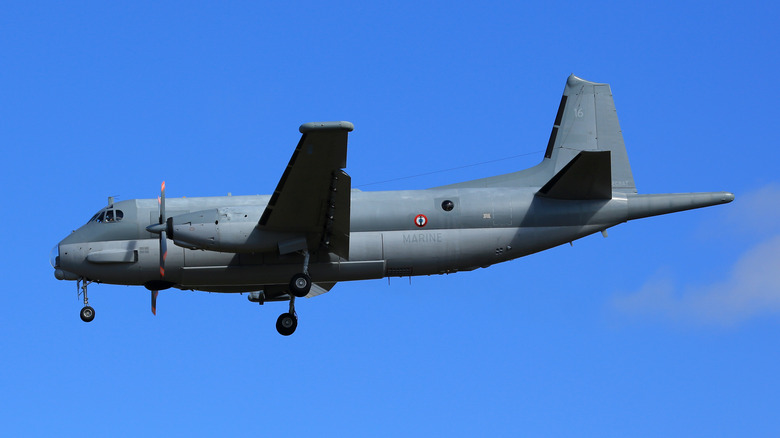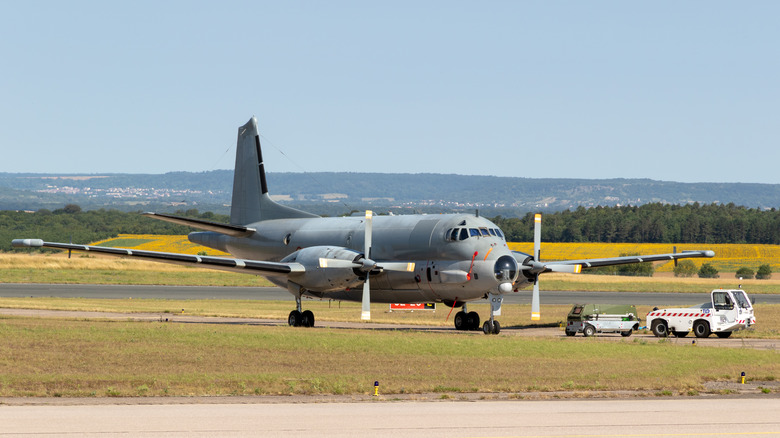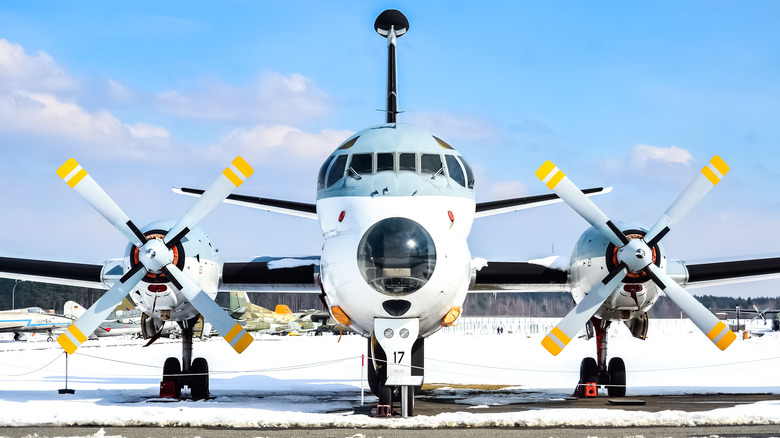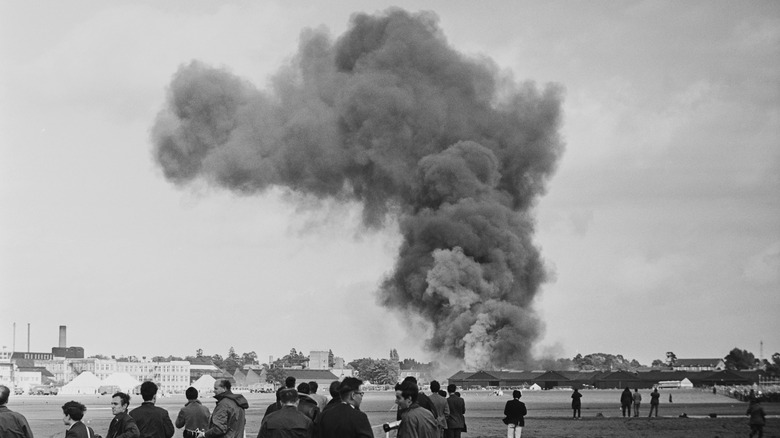The French Maritime Patrol Plane Capable Of Flying For 18 Hours
French military aviation history is littered with innovative designs and exciting aircraft. In 1956, the NATO Council agreed on the necessity for an anti-submarine aircraft that could patrol the open waters from a high altitude and over a wide range.
The U.S. Navy used the S-2 Grumman Tracker since 1954, but shifted to the S-3A Viking in 1974. Before this superior submarine hunter was a concept, however, Bréguet Aviation produced a French patrol aircraft that could endure long flight hours, making near-constant observation over maritime battlefields possible. It served in a number of crucial roles, but its most impressive feat, by far, was the 18-hour mission window and almost 5,000 mile range that the aircraft could provide.
So valuable was the Bréguet Br 1150 Atlantique (Atlantic) that the NATO armaments committee selected it in 1959, over 30 other options. The initial order in 1963 was for 20 of these aircraft to serve the French and 20 to go to Germany's armed forces. Another 20 made for 60 total. Eventually Italy and the Netherlands ordered the Atlantic too.
The Atlantic's primary function was in anti-submarine and naval warfare
The Atlantic was developed with anti-submarine operations at the forefront. In the 1950s, the Soviet Union was working to develop nuclear submarine technology, bolstering the need for NATO states to invest in similar developments. The real threat of a nuclear sub is in its mission range. The most advanced nuclear submarines of the modern age are able to remain submerged continuously for as many as 25 years! The U.K., for instance, now utilizes BAE Systems' Astute-class vessels, "the quietest submarine in the world," reports Wired.
Putting two and two together here showcases the dynamic threat that nuclear-powered submarines pose. They are able to sneak up to enemy coastlines and intercept communications, collect ship movement data, or even fire munitions against a target city within extreme proximity without being detected until it's too late.
The Bréguet Br 1150 Atlantic was developed to counter this evolving threat. It carries a variety of offensive weapons systems, as well as detection equipment. The Atlantic is outfitted with a sonobuoys and a radar scanner in a retractable radome under the fuselage. It also sports a magnetic anomaly detector in the aft, tail section of the vessel. The French Atlantic ATL2 updated models were outfitted with additional sensing equipment, including a digital acoustic processing system and a Searchmaster system.
Its development was the first cooperative European effort and its use spans decades of service
The Atlantic became a valuable tool for European air forces, but one stand out feature of the craft was its final development and manufacture process. This design marked the first cooperative European project of its kind. Société Européenne de Construction de l'Avion Breguet Atlantic (SECBAT) was founded as a collective manufacturing organization on October 2, 1961, led by Bréguet.
Belgium France, Holland and West Germany contributed to the development and completion of the Br 1150 Atlantic. The team worked quickly to finish the aircraft, by October 31, 1961, and the first prototype was piloted over Toulouse by Bernard Witt, Romeo Zinzoni, and René Périneau, according to Dassault Aviation.
Dassault Aviation, which eventually merged with Bréguet, notes that the Atlantic "was the only maritime patrol aircraft in the world specially designed for its mission and not a variant of a civil commercial aircraft." It was purpose built to be crewed by a team of 12.
The Atlantic has seen diplomatic friction
This Atlantic not only operated as an anti-submarine tool to support naval warfare operations — it was used in reconnaissance missions too. One such flight resulted in a tense diplomatic spat between India and Pakistan, in August 1999.
The Pakistani Navy enlisted a Bréguet Br 1150 Atlantic to serve in a reconnaissance role. It flew one near the Naliya IAF airbase, which was intercepted by Indian MiG-21s. The Hindustan Times reported that the airbase "was preparing for a visit the next day by Air Chief Marshal AY Typnis," perhaps explaining both the rival nation's interest in the area and the Indian Air Force's haste in scrambling jets to intercept the Atlantic. The MiG pilots initially ordered the Atlantic to land at the base, and then attempted to force cooperation. Instead, the Pakistani crew opted for escape. Ultimately, the Indian MiG pilots shot the Atlantic down, killing its 16 passengers.



